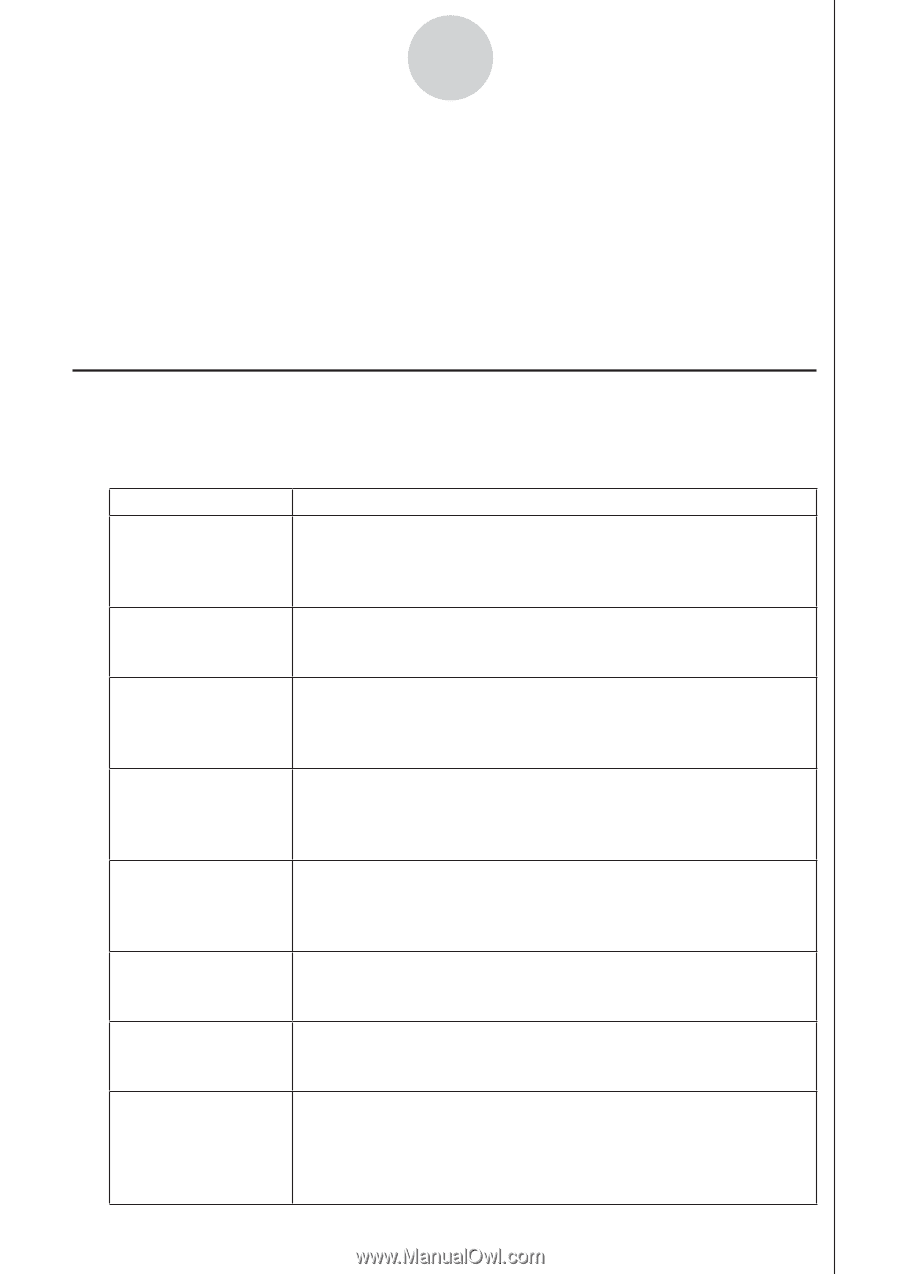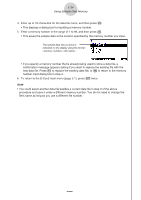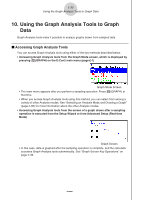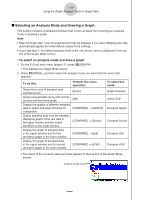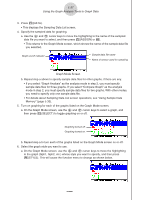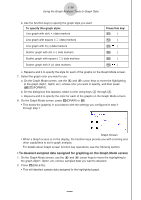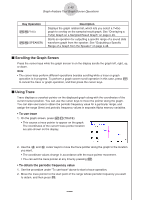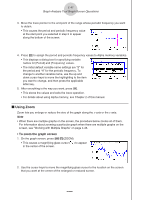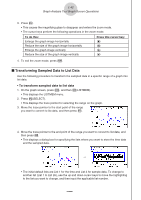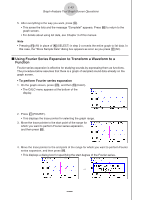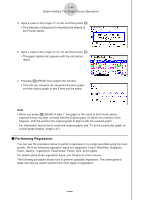Casio FX-CG10 Software User Guide - Page 584
Graph Analysis Tool Graph Screen Operations, Graph Screen Key Operations
 |
View all Casio FX-CG10 manuals
Add to My Manuals
Save this manual to your list of manuals |
Page 584 highlights
ε-39 Graph Analysis Tool Graph Screen Operations 11. Graph Analysis Tool Graph Screen Operations This section explains the various operations you can perform on the graph screen after drawing a graph. You can perform these operations on a graph screen produced by a sampling operation, or by the operation described under "Selecting an Analysis Mode and Drawing a Graph" on page ε-36. k Graph Screen Key Operations On the graph screen, you can use the keys described in the table below to analyze (CALC) graphs by reading data points along the graph (Trace) and enlarging specific parts of the graph (Zoom). Key Operation !1(TRACE) !2(ZOOM) !3(V-WIN) !4(SKETCH) K1(PICTURE) K2(LISTMEM) K3(EDIT) K4(CALC) Description Displays a trace pointer on the graph along with the coordinates of the current cursor location. Trace can also be used to obtain the periodic frequency of a specific range on the graph and assign it to a variable. See "Using Trace" on page ε-40. Starts a zoom operation, which you can use to enlarge or reduce the size of the graph along the x-axis or the y-axis. See "Using Zoom" on page ε-41. Displays a function menu of special View Window commands for the E-Con2 mode graph screen. For details about each command, see "Configuring View Window Parameters" on page ε-49. Displays a menu that contains the following commands: Cls, Plot, F-Line, Text, PEN, Vertical, and Horizontal. For details about each command, see "Drawing Dots, Lines, and Text on the Graph Screen (Sketch)" on page 5-50. Saves the currently displayed graph as a graphic image. You can recall a saved graph image and overlay it on another graph to compare them. For details about these procedures, see "Saving and Recalling Graph Screen Contents" on page 5-20. Displays a menu of functions for saving the sample values in a specific range of a graph to a list. See "Transforming Sampled Data to List Data" on page ε-42. Displays a menu of functions for zooming and editing a particular graph when the graph screen contains multiple graphs. See "Working with Multiple Graphs" on page ε-46. Displays a menu that lets you transform a sample result graph to a function using Fourier series expansion, and to perform regression to determine the tendency of a graph. See "Using Fourier Series Expansion to Transform a Waveform to a Function" on page ε-43, and "Performing Regression" on page ε-44. 20100801
